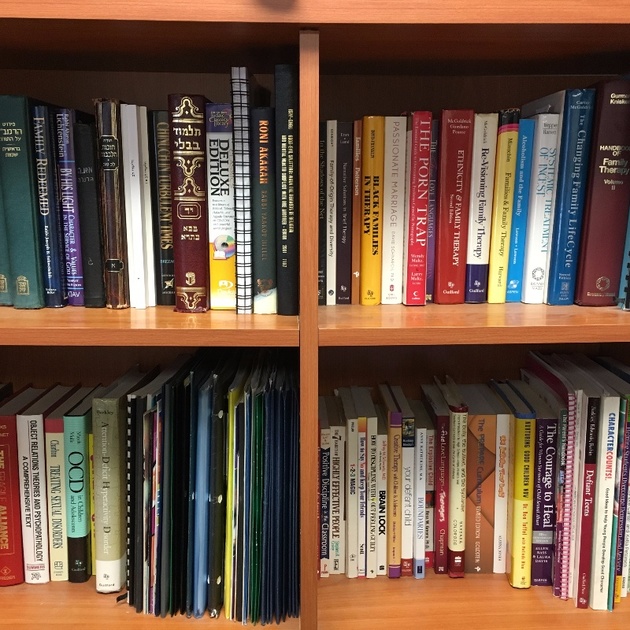
When studying the Torah, it pays to attend not just to the recorded content - be it the narratives or the Mitzvos, but also to the language that the Torah uses in conveying its content. In particular, we can tap and mine the rich veins of Biblical wisdom, when we are willing to examine the Torah’s linguistic parallels and contrasts.
A case in point is the wording found in Parshas Tetzaveh, as the Torah introduces the first two of the Bigdei Kehunah/priestly vestments, the Ephod and the Choshen.
What are the Ephod and the Choshen? The Ephod is a magnificent apron-like garment embroidered of multiple strands of wool and linen. The Choshen is a breastplate, covered with precious multifaceted gems.
Even before we highlight wording parallels that connect the Choshen and Ephod, there is evidence of a special relationship between the two. The Torah spends several Pesukim describing how the Choshen and Ephod, when worn by Aharon, are connected by an elaborate system of rings, chains, and straps. The Torah specifically warns: "The Choshen shall not be detached from the Ephod."
This takes on added meaning, when we access the Gemara (Zevachim 88b) that teaches how the Ephod is a garment that directs us away from Avodah Zara, toward faithful worship of Hashem, whereas Choshen represents our capacity to understand and apply Dinim/civil law.
In a larger sense, Ephod and Choshen can be formulated as representing Bain Adam LaMakom - the laws between Person and Hashem - and Bain Adam Lachaveiro - the laws between Person and Person. As such, they comprise the two primary Mitzvah categories. To the extent that the Choshen and Ephod must always be connected, while on Aharon, we are being shown that Judaism requires both adherence to the ancient, meaning-laden, rituals and a commitment to the laws that govern proper, harmonious interpersonal relationships.
An age-old question is “Which category is primary and which is secondary?” Is it more important to be ritually observant or to avoid causing harm to others?1 Might the language and wording surrounding the details of Choshen and Ephod contain any hints?
There is, in fact, linguistic evidence that points to the importance of Choshen and Dinim. It is found in the Torah’s description of two separate sets of stones, each set being engraved with the names of the 12 Shevatim/tribes.
One set of stones is embedded in the Ephod; the other is embedded in the Choshen. The Ephod holds the Avnei Shoham, 2 stones, each with 6 names of Shevatim. The Choshen holds the Avnei Milu’im, 12 stones containing the 12 names of the Shevatim.
Regarding both, the Torah instructs us that Aharon should carry the names, on stones of Zikaron/remembrance, before Hashem. This demonstrates that Aharon and those who followed him had the role of unifying the tribes, of reminding them of their shared history and destiny, in the service of Hashem.2 In order for the Jews to remain a people, a unified nation, they must be reminded of their shared responsibility to uphold and cherish every facet of Hashem’s laws, both Bain Adam LaMakom and Bain Adam LaChaveiro.
There is one key difference. It is found in how Aharon is commanded to bear each set of stones. Regarding the uniting of Jews in religious law - as represented by the Ephod - Aharon is commanded to carry the names, the stones on his Katef/shoulder. Regarding civil law, Aharon is commanded to carry the names, the stones, over his Lev/heart. What is the meaning of this difference?
I believe the Torah is teaching us that we need to make a special effort to place Dinim and Mishpatim at the center - not the periphery - of our lives.3 Perhaps the Torah is addressing those who would claim the following: "The defining and primary way to be Frum, to be observant, is to keep the Mitzvos Bain Adam LaMakom. Once we keep Shabbos, Kashrus, and the Laws of Family Purity then we are Frum. It doesn’t matter if we withhold a worker’s wages, if we reneg on a business agreement. It doesn’t matter if we lie, cheat or even steal. Frum is decided by religious law, not by civil law."
By the Torah insisting that it is the stones of the Choshen, not the Ephod, that are placed over Aharon’s heart, we are being reminded that our observance of the Mitzvos Bain Adam Lachaveiro - of civil law - is no less essential to our being considered Frum servants of Hashem. Our faithful upholding of Dinim lies at the Lev, the very heart and center of Judaism.4 If we cannot live as an organized, civilized society, we have distorted the Torah's priorities.
A story is told of a congregant who was trying to share a narrative with Rav Shimon Schwab, who headed the Breuers Kehillah, for nearly 40 years. The congregant began: “A Frum man stole money…” Rav Schwab interrupted “WHAT?” The congregant tried again: “A Frum man stole money…” Rav Schwab again interrupted: “Someone who steals money is not a Frum man!”
May we all merit to see the day when the Bigdei Kehunah are once again worn by our Kohen Gadol. May we also merit to observe all of Hashem’s commandments, even (or dare I say “especially”) Dinim, as represented by the Choshen, by the centrality of the names of the Shevatim, over Aharon’s heart.
Notes:
1.We might argue that the laws of Bain Adam Lamakom are more important, inasmuch as that the Ephod is introduced before the Choshen. This would be consistent with the Midrash Rabbah on the Pasuk in Tehillim: ืืืื ืืืจืื ืืืขืงื ืืงืื ืืืฉืคืืื ืืืฉืจืื in which we are taught that our full and absolute acceptance of Hashem’s sovereignty and commandments precedes our capacity to plumb the depths of Mshpatim - civil law. It also jibes with the commandment that the Choshen not be detached from the Ephod; the implication being that the Ephod holds a fixed, stationary position, to which the Choshen must adhere.
Then again there is evidence as to the importance of the Choshen and of Dinim, as it is inside of the Choshen that the most mysterious (and arguably potent) components of Bigdei Kehunah are placed. I am referring to the Urim VeTumim, which, according to Rashi, contain the Divine name and which illuminate the stones of the Choshen. Ramban notes that they also confer upon the wearer the divine inspiration to decode the message of the illuminated stones.
2. As regards the Avnei Shoham Hashem instructs Moshe: And Aharon shall carry their names, before Hashem, on his two shoulders, for a remembrance. (Exodus 28:4)
As regards the Avnei Miluim, Hashem instructs Moshe: And Aharon shall carry the names of B’nei Yisroel… on his heart… for a remembrance…. before Hashem, always. (Exodus 28: 29-39)
Moreover, the idea that civil law comes before religious law is found in the Mechilta which asks why Mishpatim/Dinim are the first significant body of law to be taught at Sinai. The Mechilta answers that, as long as there are potential lawsuits between people, there is division and unhealthy competition. It is the capacity to resolve litigation, through the body of Dinim, that restores essential, foundational peace between people.
2. In Hebrew, there are two different words to represent shoulder; one is Katef and one is Shechem. Shechem focuses more on the function of the shoulder. When a Biblical figure - whether Hagar or Rivkah - shoulders an object, the term Shechem is used. When one wakes up early to face a task, the related term, VaYashkem, is used. Katef, in contrast, focuses on anatomy and, thus, location. Hence, the outer edge of the Mishkan’s courtyard is referred to as Katef.
The term Lev is similarly used to describe location, as in the fire of Sinai that burned, as described by Moshe, up to Lev Hashamayim (Devarim 4:11) - the very center of heaven.
In short, Lev refers to the center of our bodies and lives, whereas Katef refers to the outer edges.
3. There is an additional piece of evidence as to the foundational nature of Dinim:
As regards most components of the Choshen and Ephod, it is fairly clear which components belong to the Choshen and which belong to the Ephod. By way of example, the Urim V’Tumim and the Avnei Milu’im clearly belong to the Choshen. The Kesefos/shoulder straps and the Avnei Shoham clearly belong to the Ephod.
What can we say, though, about the Mishbetzos - the settings that are placed on the shoulder straps of the Ephod and that hold the Avnei Shoham, yet also connect the Ephod (by way of a chain) to the Choshen? A strong argument could be made that, if the Avnei Shoham are considered part of the Ephod, then certainly the settings that hold them should be considered part of the Ephod.
When we check Parshas Tetzaveh for evidence, it is unclear, given that the commandment to fabricate the Mishbetzos is found in a Parsha, nestled in between the Parshiyos about the fabrication of the Ephod and the Choshen. When, however, we read Parshas Pekudei, we find a clear answer: The description of the fabrication of the Mishbetzos is located in the middle of the Parsha describing the fabrication of the Choshen!
How could it then that the components of the Ephod - the Avnei Shoham - that speak to Jewish unity, by way of Mitzvos between person and Hashem, are nestled in components of the Choshen - the Mishbetzos - that emphasize Dinim - the Mitzvos between person and person? I believe that this as well demonstrates that our unity, even in serving Hashem, can only be meaningful, if it occurs in a context, if it is given a foundation, of a civil, just society - of excellence in Mitzvos between person and person.
Photo Credit: Aziz Acharki: Unsplash
 Previous
Previous

